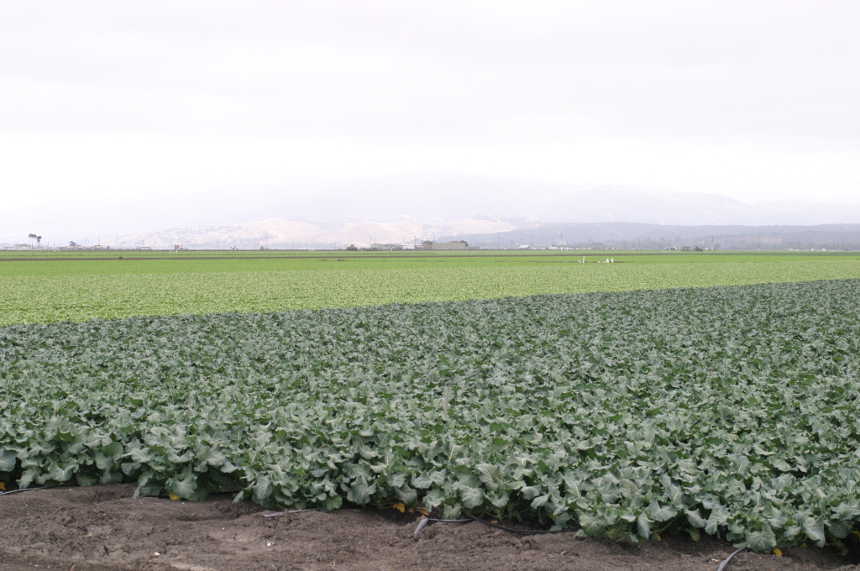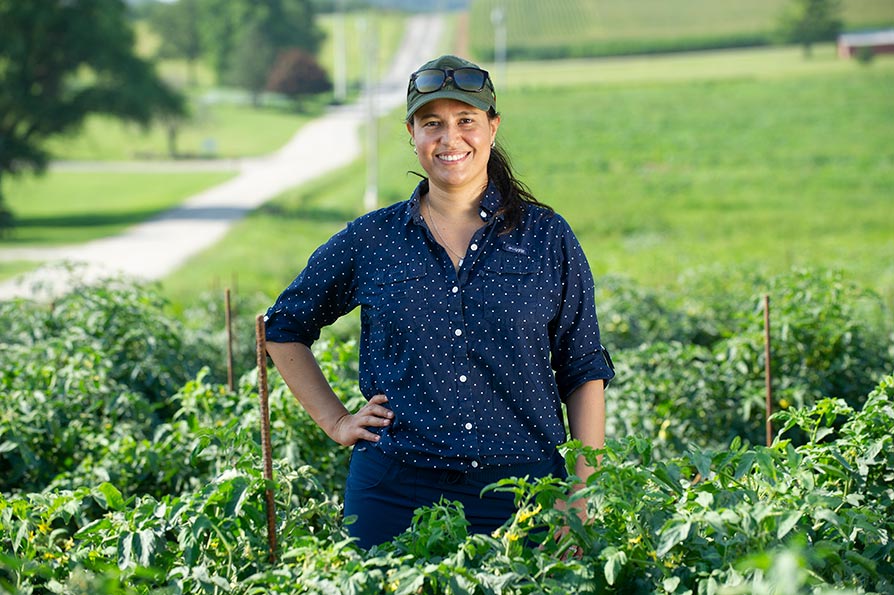Use Broccoli Rotations To Reduce Disease And Minimize Leaching
Crop rotations are a key production practice utilized by every grower. You recognize the importance of rotations to break insect and disease cycles. Rotating from one crop type or family, such as tomatoes, to another crop family, such as cucurbits, has the benefit of reducing the inocula of disease organisms that are specific to tomatoes and other vegetables in that family.
Longer rotations, such as three to five years, are better than shorter rotations of one year. Disease organisms such as Verticillium and Fusarium that have longer-lived resting spores require longer rotations to be effective. An example of an excellent rotation in the Salinas Valley is rotating broccoli with lettuce. Broccoli has been documented to reduce the incidence of both Verticillium and lettuce head drop (Sclerotinia minor) which are the two most problematic soil-borne diseases of lettuce in the area.

Broccoli is a good rotational crop because it reduces the incidence of disease, and it minimizes nitrate leaching. Photo credit: Richard Smith.
Growers are well aware of the impact of rotations on crop diseases. Other aspects of rotations are not as well known, such as the impact on nitrate leaching by rotating crops with deeper root systems. Winter-grown cover crops have been shown to capture and take up residual soil nitrate from the soil, thereby reducing nitrate leaching.
Cash Crops Can Reduce Leaching
However, cash crops can also reduce nitrogen leaching. For instance, summer-grown broccoli has been shown to contain more nitrogen in the above-ground biomass than is applied as fertilizer. In part, broccoli is capable of accomplishing this because it has a deeper root system than many of the crops it is rotated with (e.g. lettuce and spinach).
During the summer production season, broccoli is in the ground for 80 to 90 days and its roots extend into the soil from 36 inches to more than 40 inches by the end of the growing cycle. Summer-grown Romaine lettuce, by contrast, is in the ground for 60 to 65 days and its roots extend down to just over 2 feet. Clipped spinach is in the ground for about 30 days, and its roots reach down 16 to 18 inches by the end of the crop cycle.
The advantage of broccoli’s deeper root system is that it is able to take up nitrate that may have gotten past the root system of lettuce and spinach. Given that broccoli takes up more nitrogen than is applied as fertilizer, it acts like a nitrogen scavenger by taking nitrogen from deeper soil levels and bringing it back to the soil surface.
Harvested broccoli heads account for about one-third of the total nitrogen taken up by broccoli. As a result, two-thirds of the nitrogen taken up by broccoli is in the biomass that returns to the soil. In a perfectly managed system, growers would utilize the nitrogen that comes from the broccoli residue to provide for the nitrogen needs of the succeeding crop. This can be done by carefully managing the irrigation water and discounting subsequent fertilizer applications based on the level of residual soil nitrate in the soil.
According to the Crop Reports published by the Monterey Agricultural Commissioner, there were 65,000 acres of broccoli and 109,000 of lettuce in 2013. You might think that broccoli rotations would be more popular given the disease and water-quality benefits they bring to the vegetable production system in the Salinas Valley. However, the key issue that may dampen your enthusiasm for broccoli is that it is not as remunerative as other crops.
This is in spite of all the ways that you have found to market broccoli: bunches, crowns, florets, and even broccoli slaw. The supply of broccoli typically is greater than demand which often results in prices lower than the cost of production and harvest.
Broccoli Gains Consumer Favor
The demand for broccoli, however, has increased dramatically in recent years. From 1984 to 2004, per capita consumption of fresh broccoli rose from about 2 to 6 pounds. The rise has been in part due to the increase in the consumption of salads at home and at restaurants. Consumers seek the health benefits of broccoli due to its high fiber, mineral, and vitamin content, in addition to its cancer-suppressing agents. So broccoli fights human disease as well as crop disease!
It is fortunate that broccoli is the key rotational crop for lettuce in the Salinas Valley. It is beneficial to the production of our number-one vegetable crop, lettuce, by reducing the incidence of soil-borne diseases and reducing nitrate leaching. It is healthful and delicious. You just can’t get any better than that.
So every time you buy broccoli and enjoy it with family and friends, you can feel good about your purchase. It is doing a lot of good.










